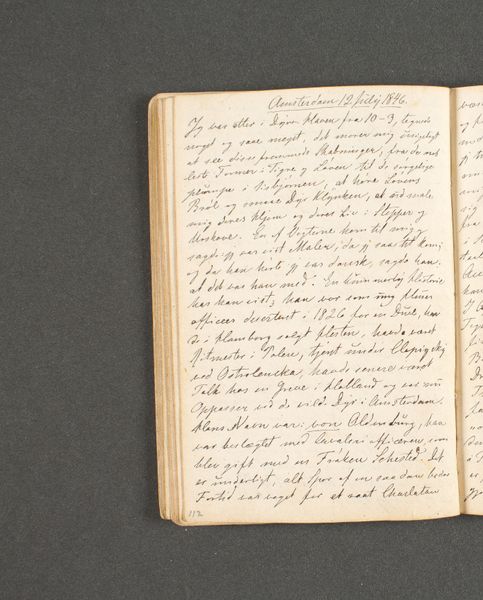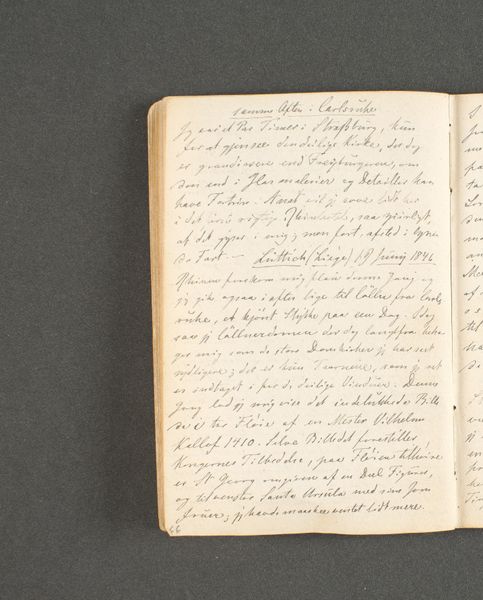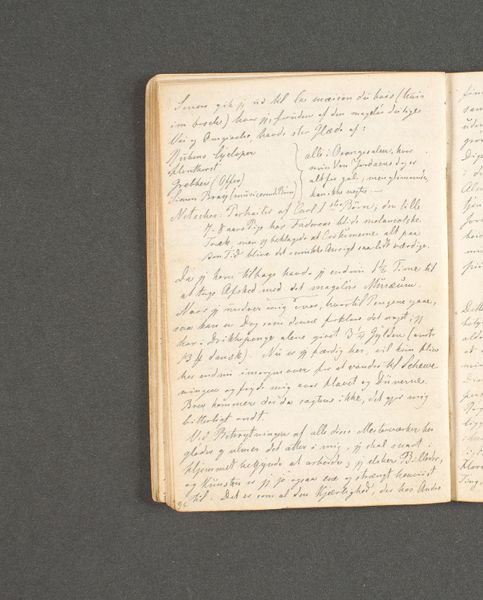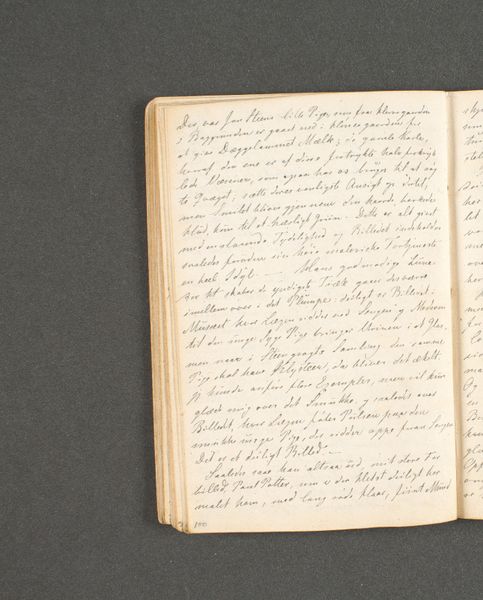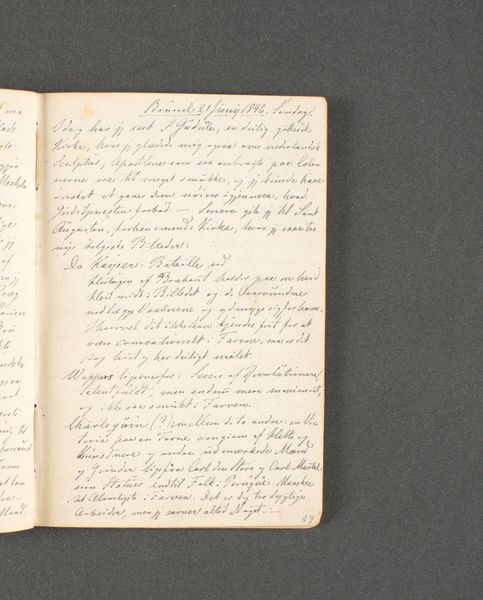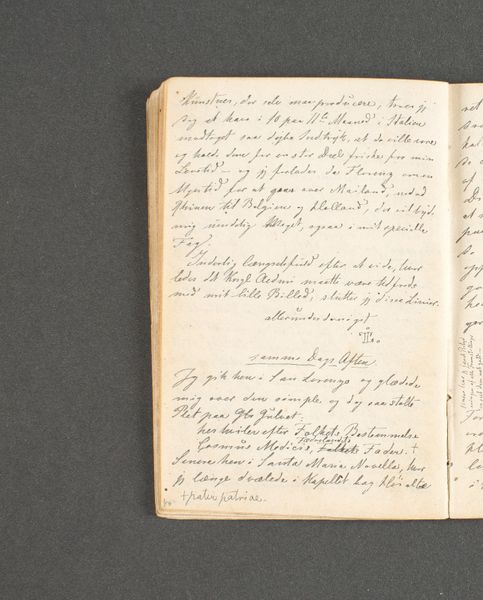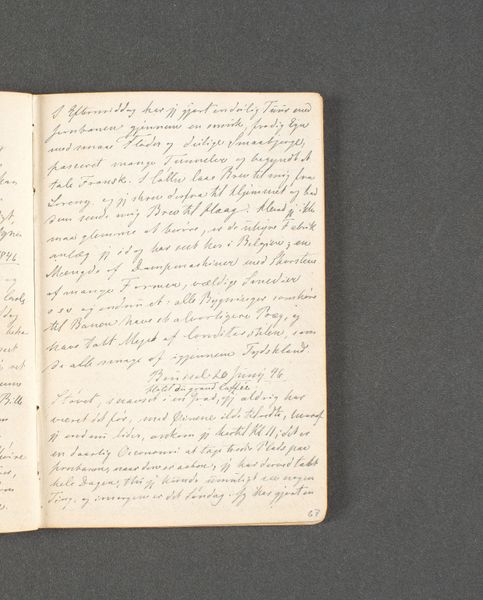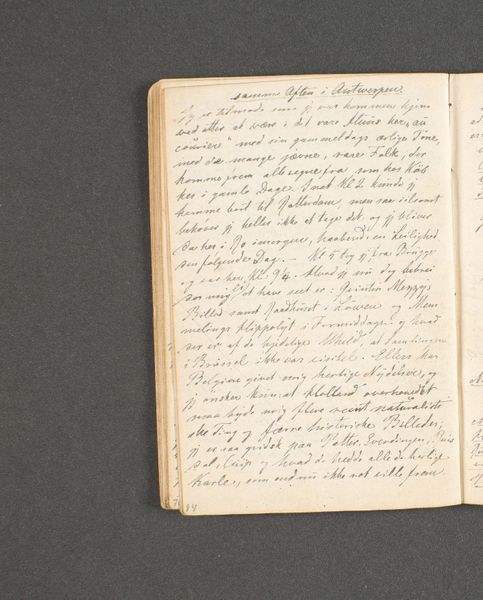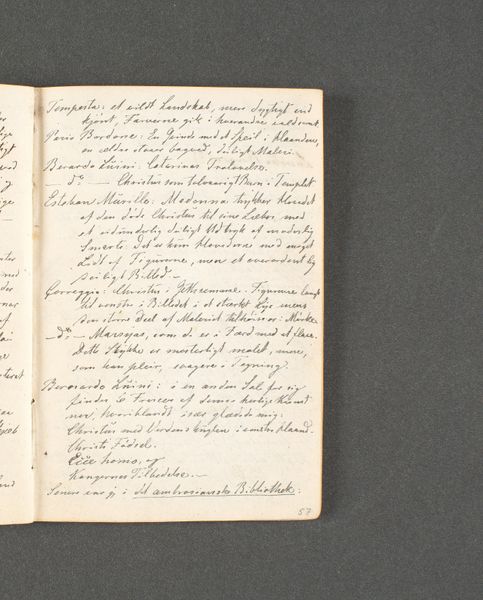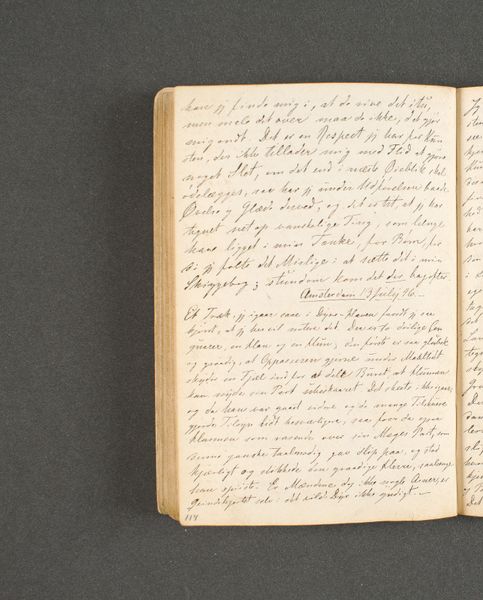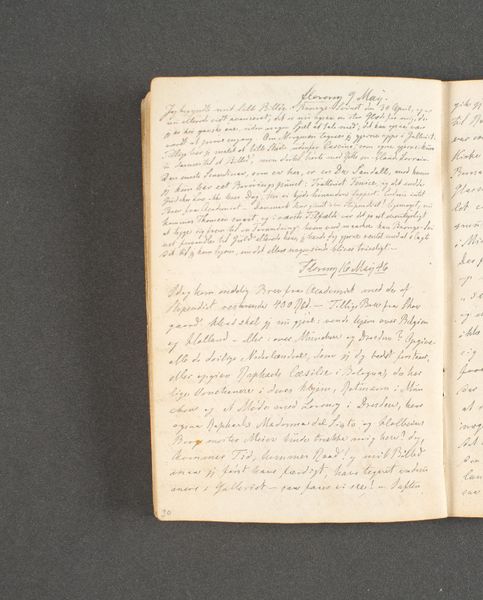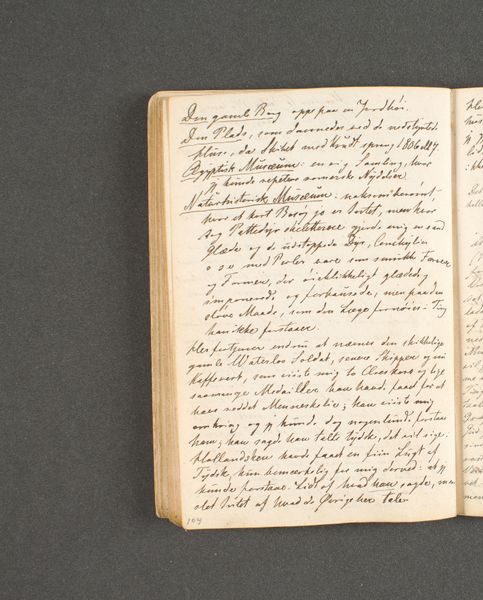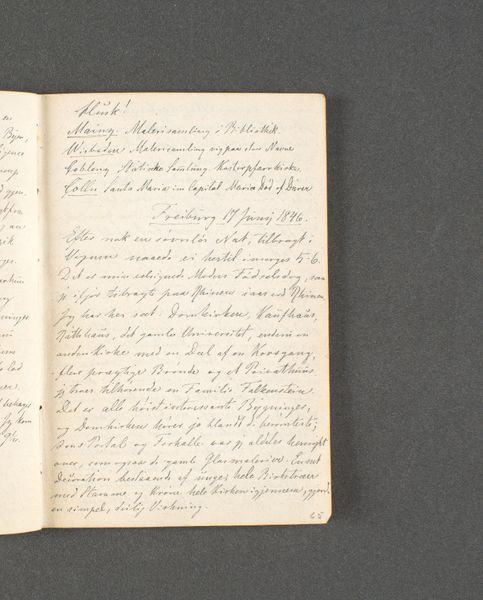
drawing, paper, ink, pen
#
portrait
#
drawing
#
paperlike
#
sketch book
#
hand drawn type
#
landscape
#
personal journal design
#
paper
#
personal sketchbook
#
ink
#
journal
#
romanticism
#
sketchbook drawing
#
pen
#
sketchbook art
#
design on paper
#
small lettering
Dimensions: 131 mm (height) x 89 mm (width) (bladmaal)
Editor: This is a page from "Rejsedagbog. Milano," or Travel Journal. Milan, dated 1846, by Johan Thomas Lundbye. It’s an ink drawing on paper. The writing filling the page creates a sense of intimacy, like stumbling upon someone's private thoughts. How do you interpret this work in its historical context? Curator: Considering its creation in 1846, this travel journal provides a window into the artistic and intellectual life of the time. The Romantic era emphasized the individual experience and the sublime, which is often reflected in nature. How does the act of recording one's experiences – thoughts and observations – become a form of asserting agency in a rapidly changing world? Lundbye's notes on Milan's art and architecture are interesting – he speaks of churches and palaces. Editor: That's interesting. So this wasn’t just about pretty landscapes, but also about engaging with existing cultural and political power structures. It sounds like the buildings themselves became documents. Curator: Precisely. Buildings held power, visually and literally. It’s worthwhile asking: How does Lundbye engage with established narratives by sketching and jotting down his observations in this format? Consider how museums were also being established and shaped national identities and understandings of art during this period. His journal becomes part of that visual and written discourse, no? Editor: Absolutely. I didn’t realize how a personal journal could connect to these larger socio-political movements and institutional structures, that the artist inserts himself in public sphere. Curator: It’s through this type of historical lens that seemingly private art reveals itself to be deeply enmeshed with society. We can now move forward by viewing all historical art this way.
Comments
No comments
Be the first to comment and join the conversation on the ultimate creative platform.
